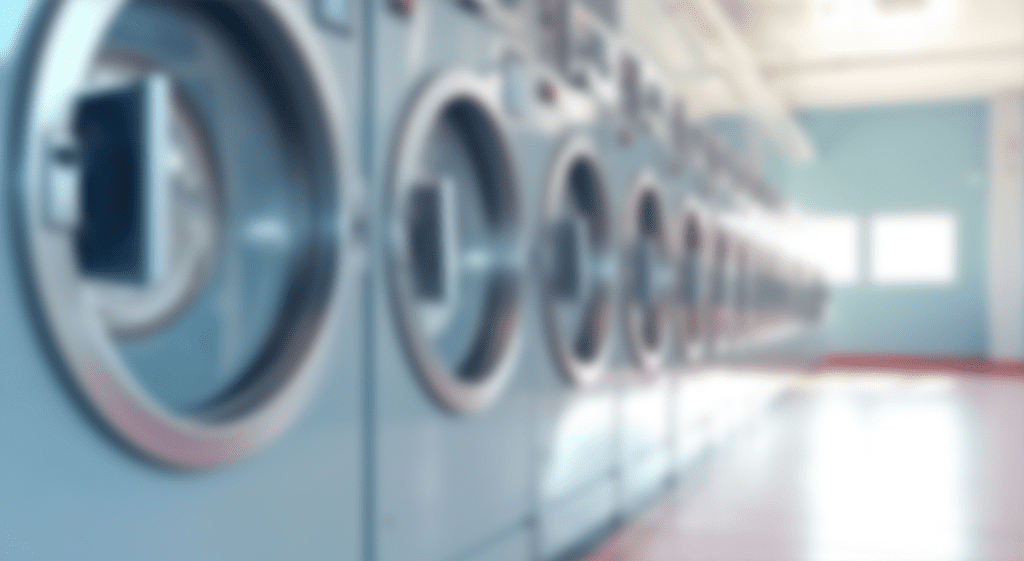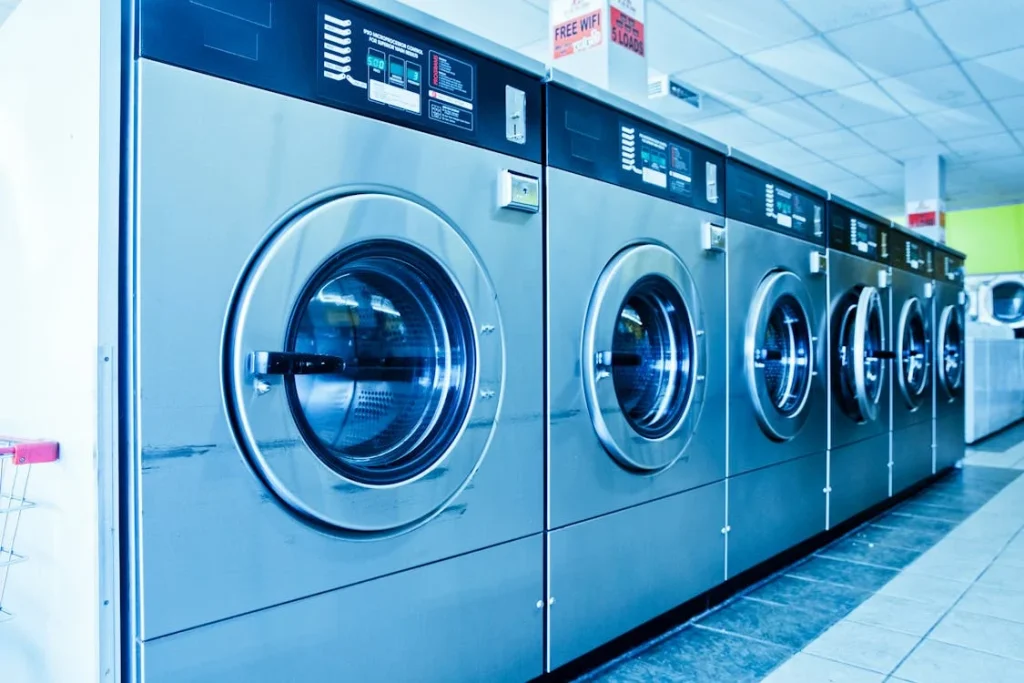When running an industrial laundry operation, the efficiency of your equipment plays a significant role in your overall productivity and profitability. While many businesses still rely on traditional washing methods, not using a wash extractor in laundry can lead to hidden costs that slowly eat away at your bottom line. In this article, we’ll explore why investing in a wash extractor is essential, and how failing to do so can result in unnecessary expenses and challenges. For more information on wash extractors, check out our commercial washer extractors and explore our full range of industrial laundry solutions.
Tabla de contenidos
- 1. What is a Wash Extractor?
- 2. How Wash Extractors Save Time and Money
- 3. Hidden Costs of Not Using a Wash Extractor
- 4. Operational Challenges Without a Wash Extractor
- 5. The Financial Impact of Not Using a Wash Extractor
- 6. How to Choose the Right Wash Extractor for Your Business
- 7. Conclusion: Invest in a Wash Extractor Today
- 8. FAQs
1. What is a Wash Extractor?
A wash extractor is a powerful piece of industrial laundry equipment that combines washing and extraction (spinning) processes into one. These machines are designed to efficiently remove water from laundry loads, which not only shortens drying time but also improves the overall quality of your laundry operation. The wash extractor’s ability to handle high spin speeds and large capacities makes it an ideal choice for any business dealing with high-volume laundry tasks.
2. How Wash Extractors Save Time and Money
If you’re still using traditional washing methods, you’re probably losing both time and money. Here’s how wash extractors can save you:
2.1. Reduced Drying Time
One of the primary benefits of a wash extractor is that it removes more water from the clothes than regular washers, reducing the amount of time needed to dry them. The result? Faster turnaround times and lower energy costs for drying.
2.2. Labor Efficiency
With a wash extractor, the need for manual labor is significantly reduced. Employees no longer need to spend excessive time moving clothes from one machine to another or wringing out items by hand. This streamlined process leads to labor savings and better workforce management.
2.3. Energy Savings
Wash extractors use advanced technology that requires less energy compared to older, less efficient machines. By utilizing high-speed spinning to extract more water, they cut down on the energy used during drying, saving you a considerable amount in utility bills.
3. Hidden Costs of Not Using a Wash Extractor
The immediate cost of not using a wash extractor may seem negligible, but over time, it can result in substantial hidden expenses that can harm your business’s profitability.
3.1. Increased Energy Consumption
Without a wash extractor, your laundry operation will consume more energy. Traditional machines use more electricity to power inefficient washing and drying cycles. Since the clothes are not properly extracted, dryers have to work harder, leading to higher energy bills.
3.2. Excessive Water Usage
Traditional laundry machines use more water than necessary, and without the water extraction capabilities of a wash extractor, that water isn’t removed efficiently. The result is more water usage for every cycle, adding to your water bills and negatively impacting your sustainability efforts.
3.3. Higher Labor Costs
More labor is required to handle laundry in a traditional setup. Employees spend more time manually transferring items, adjusting settings, and dealing with waterlogged clothes. The time spent on these tasks adds up, leading to higher labor costs that could be saved by using an extractor.
3.4. Increased Equipment Maintenance
Old, inefficient equipment often requires more frequent maintenance and repairs. Traditional washers and dryers that aren’t optimized for energy efficiency or water extraction can break down more often, leading to expensive repairs and maintenance costs. A wash extractor reduces the wear and tear on your equipment, saving money on repairs.
4. Operational Challenges Without a Wash Extractor
Using outdated equipment or not incorporating wash extractors into your operations can create several operational hurdles that hinder productivity.
4.1. Poor Wash Quality
Without the power of a wash extractor, the cleaning process can be less thorough, leading to poor wash quality. Items may not be properly rinsed or cleaned, which negatively impacts the customer experience, especially in a service-based business.
4.2. Frequent Downtime
Traditional equipment can lead to more breakdowns and unplanned downtime. This slows down your laundry operations, delaying orders, and impacting your service levels. Wash extractors, on the other hand, are more durable and reliable, reducing the chances of equipment failure.
5. The Financial Impact of Not Using a Wash Extractor
The financial ramifications of using outdated laundry equipment are real and tangible. Let’s take a deeper dive into how these hidden costs affect your bottom line.
5.1. Long-Term Financial Strain
In the long run, inefficient equipment doesn’t just cost more in energy bills and water usage; it can also lead to lost revenue. With poor wash quality, long drying times, and increased labor, your operational capacity is reduced. This can ultimately hurt customer satisfaction, which impacts repeat business and brand reputation.
5.2. Return on Investment (ROI)
On the flip side, investing in a wash extractor can yield a substantial return on investment. With improved efficiency, faster turnaround times, and lower operational costs, your ROI is significantly enhanced. Not only will your operational costs decrease, but your overall productivity will increase, directly improving your profitability.
6. How to Choose the Right Wash Extractor for Your Business
Selecting the best wash extractor for your business can be a daunting task, but focusing on key factors can make the decision easier.
6.1. Capacity Considerations
Make sure to choose a wash extractor with the right capacity for your business’s needs. Too small, and it’ll struggle with high volumes; too large, and you may be overpaying for extra capacity you don’t need.
6.2. Features to Look for
Look for features like high-speed extraction, energy-saving modes, and easy-to-use controls. Consider your business’s specific requirements and choose a model that will streamline your operations.
7. Conclusion: Invest in a Wash Extractor Today
The hidden costs of not using a wash extractor can seriously impact your laundry operations’ efficiency, financial stability, and overall service quality. By upgrading to a wash extractor, you’re not just investing in a piece of equipment, but in the future success of your business. Don’t let inefficiencies cost you more in the long run—take action today! For more information or to find the perfect wash extractor for your business, check out our commercial washer extractors and contact us at Spin Washing.
8. FAQs
What is the difference between a wash extractor and a regular washing machine? A wash extractor combines both washing and extraction (spinning) processes, removing more water and energy than a regular machine.
How much money can I save by switching to a wash extractor? Savings come from reduced energy consumption, lower labor costs, and decreased water usage, adding up to significant cost reductions over time.
Can wash extractors be used in commercial laundry services? Yes, wash extractors are specifically designed for high-volume commercial laundry operations and are ideal for businesses in the laundry industry.
What maintenance is required for wash extractors? Wash extractors require minimal maintenance, primarily regular cleaning and occasional servicing to ensure long-term performance.
Are wash extractors eco-friendly? Yes, wash extractors are more energy-efficient and use less water, making them a more eco-friendly option compared to traditional washing methods.
Here are some other articles that we think might interest you:
Top 6 Brands of Industrial Washing Machines


